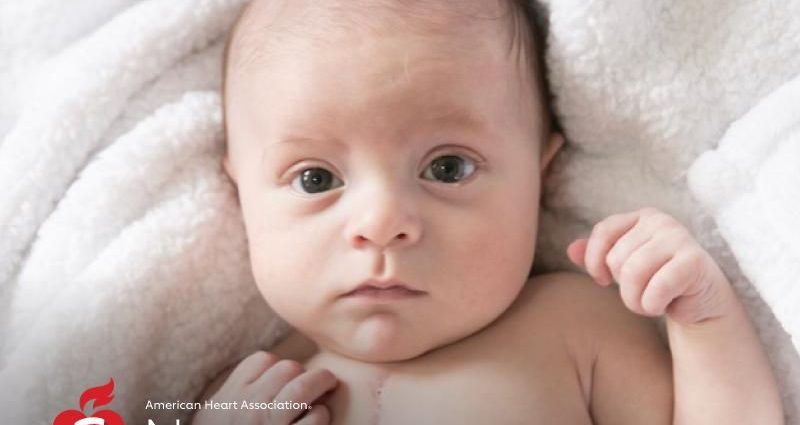TUESDAY, Aug. 17, 2021 (American Heart Association News) — Linda and Clint Pilkinton had a healthy toddler when Linda got pregnant with their second child. They were eager to give Charlie a baby brother.
The first trimester of her pregnancy proceeded much like it did with Charlie. Then came the standard 16-week ultrasound and another chance for Linda and Clint to peek at their son.
The doctor moved the wand across Linda’s belly, then grew quiet. So did the technicians.
The mood shift worried the couple. Then the doctor said: “We think your son is going to be born with a congenital heart defect.”
Linda cried and Clint took her hand as the doctor explained their baby would be born with hypoplastic left heart syndrome, or HLHS, a rare defect in which a part of the heart is underdeveloped or not there at all. In other words, their baby would have half a heart.
“You’re thinking, ‘How can this child exist, live, or even make it to birth?'” Linda said.
In the next 24 hours, the Pilkintons met with a specialist who answered those questions.
“We got a glimpse of hope that he could be born, that he could be a normal kid at the end of this,” Clint said.
Still, doctors offered the choice of ending the pregnancy. The Pilkintons wrestled with it for weeks. Linda cried daily. Her days were filled with worry.
“We were writhing with how to be the best parents to that child,” she said.
Once they decided to keep the baby, doctors urged Linda to finish the pregnancy strong. That included restarting the anxiety medication she’d gone off when she found out she was pregnant.
At 39 weeks, four days before Christmas, baby Luke was born. After his first cry, he turned blue.
Doctors swooped in to give him lifesaving medicine. Then he was transferred to the nearby children’s hospital.
“Here I am recovering from birth and there’s no baby,” Linda said. “It was the first sign that this is going to be a very different path.”
Children born with HLHS need a series of three open-heart surgeries. Luke underwent his first at 7 days old. As he recovered, the Pilkintons took their first photo with him, his limbs covered with tubes and bandages. He stayed in the hospital for three months, then had the second operation.
“It felt like I was in daddy survival mode,” Clint said. “Not only are you trying to take care of a wife that just gave birth, but you also have a child that’s critically ill.”
In May, 3-year-old Luke underwent the third surgery.
Luke acts like any other 3-year-old. He runs around the house and picks on his big brother.
But “having a congenital heart defect is a lifelong journey,” Linda said.
It’s not only the patient on that journey. Clint and Linda often felt isolated and alone.
“You wonder when the next shoe is going to drop,” Linda said. “The rest of your friends are making plans for the beach and you’re just trying to get to the next day.”
Therapy helped. The couple also decided to share their story with the world and support other families like them with a nonprofit. They established the Bright Heart Foundation to raise awareness about CHD, which affects approximately 40,000 newborns in the U.S. each year, and to give hope to families dealing with the day-to-day challenges of CHD.
The organization connects families with needed resources, such as mental health services, and fills gaps in care such as a lack of benches or playmats used during occupational therapy. For families in the hospital, the foundation provides stuffed animals, toys, blankets and pacifiers.
“Mom then says, ‘I can do this for the next hour,'” Linda said. “The baby is going to feel that, and that hour can be a turning point for the child. Our ultimate goal is to cure CHD. But in the meantime, we need to get families help today.”
Linda and Clint have connected with families around the world, from Brazil to Ireland. It’s OK to feel lonely, they tell them, but know you’re not alone.
The organization currently serves families in their home state of Tennessee, but the Pilkintons want to expand.
Linda and Clint still struggle to find a balance between protecting Luke and his fragile immune system and letting him live his life.
For instance, after he recovered from his third surgery, they sent him back to daycare because the value of being with his friends was worth the risk that he might catch something.
“I don’t want to stomp out his potential,” Linda said. “I want him to soar. It’s going to be a lifelong battle, but we’re in it with him. For now, we’re basking in our glory until we can’t.”
American Heart Association News covers heart and brain health. Not all views expressed in this story reflect the official position of the American Heart Association. Copyright is owned or held by the American Heart Association, Inc., and all rights are reserved. If you have questions or comments about this story, please email editor@heart.org.
By Deborah Lynn Blumberg
Copyright © 2025 HealthDay. All rights reserved.

